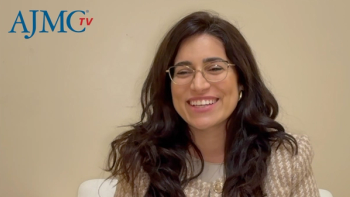
How Patient Suicide Affects Clinicians
A panel of doctors at the 2017 Neuroscience Education Institute (NEI) Congress discussed the impact of losing a patient to suicide and how they deal with it.
According to data from the CDC, in 2013 there were 41,149 suicides in the United States. Suicide is the 10th leading cause of death in the United States, and for every death there are approximately 25 suicide attempts. In practice, 5000 to 10,000 clinicians lose a patient to suicide every year, and 40% to 60% of psychiatric residents will experience a patient suicide during their first year of training.
A panel of doctors at the 2017 Neuroscience Education Institute Congress discussed the impact of losing a patient to suicide and how they deal with it.
The moderator, David W. Goodman, MD, FAPA, assistant professor, Department of Psychiatry and Behavioral Sciences, Johns Hopkins School of Medicine, and director and founder, Adult Attention Deficit Disorder Center of Maryland, kicked off the discussion by asking the panelists the impact patient suicide has on them.
Roger S. McIntyre, MD, FRCPC, professor, Departments of Psychiatry and Pharmacology, University of Toronto; Head, Mood Disorders, Psychopharmacology Unit, University Health Network, told the audience an anecdote from 3 months ago when one of his residents lost a patient to suicide. The resident was severely impacted by this, said McIntyre.
“Most of it was about an automatic assumption process,” said McIntyre. “The automatic assumption process was that because this person killed themselves, de facto that must mean that something was done wrong, and I think that’s an automatic assumption many people have.”
During the incident report, McIntyre noticed that there still remains a lot of confusion of what is a risk factor for suicide and predicting suicide. Risk factors and predicting suicide are not the same thing, said McIntyre. This was another point of education for the resident, because the guilt is “could I have predicted suicide?” We can’t predict this type of behavior, said McIntyre.
Following the suicide of one of his long-time patients, Thomas L. Schwartz, MD, professor and vice chair, Department of Psychiatry, SUNY Upstate Medical University, felt self-doubt. Feeling alone and wondering if he would get sued and if he was a bad doctor, what helped him was speaking to other colleagues who had dealt with patient suicide.
In most other fields of medicine, physicians accept the fact that there’s such a thing as terminal illness; there’s no feeling that you messed up or you did something wrong, said William M. Suavé, MD, Greenbrook TMS NeuroHealth. However, that’s not the case for psychiatrists.
Agreeing with Mcintyre, Goodman agreed that one of the biggest impacts is the feeling of guilt when a patient commits suicide.
“It becomes a thread in the fabric of who you are,” said Goodman. “And for me, the work was ‘Was I at fault?’ The first thing I went to was it must have been my fault; I missed something. There was a red flag; I didn’t get it.”
Goodman then moved into how he was able to power through the guilt. What helped him was the mother of the patient writing an editorial letter in the local newspaper saying that her son got the best care available and died from his illness. Goodman now uses this as his perspective: it was not his fault that his patient died. The patient died because of his illness.
Newsletter
Stay ahead of policy, cost, and value—subscribe to AJMC for expert insights at the intersection of clinical care and health economics.





























































